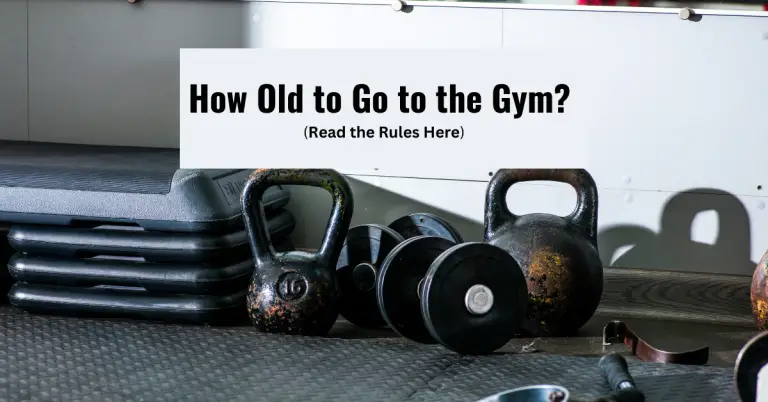How to Manage Chronic Pain While Working Out

To manage chronic pain while working out, focus on low-impact activities like swimming or yoga, as they’re easier on your joints. Consult healthcare professionals for tailored advice. Set realistic goals and listen to your body, adjusting your routine based on how you feel each day. Incorporate stretching and use tools like resistance bands for modifications. Remember to pace yourself and use pain management techniques as needed. Want more tips on staying active with chronic pain?
Understanding Chronic Pain and Its Impact on Exercise

When you’re living with chronic pain, it can feel like a constant battle to stay active and maintain a workout routine. Understanding how chronic pain impacts your ability to exercise is vital. You might need to make exercise adaptations that accommodate your limitations while still promoting movement. For instance, low-impact activities like swimming or yoga can be gentler on your body and help reduce stress on painful areas.
Incorporating coping strategies into your routine can also enhance your pain management. This might include pacing yourself, setting realistic goals, and listening to your body’s signals. If you feel a flare-up coming on, it’s important to adjust your activities accordingly, prioritizing safety over intensity. Remember, staying active doesn’t have to mean pushing through pain; it’s about finding what works for you and maintaining a consistent, safe approach to movement.
Consult With Healthcare Professionals
Consulting with healthcare professionals is vital for anyone managing chronic pain while trying to maintain an active lifestyle. These experts can provide valuable insights into effective pain management strategies tailored specifically for you. They can help you understand how your body reacts to different exercises and suggest modifications to guarantee safety during your workouts.
Engaging in healthcare collaboration is important. By sharing your experiences and concerns, you enable your healthcare team to develop a thorough plan that addresses your unique needs. They may recommend physical therapy, specific exercises, or medications that can enhance your comfort while exercising.
Set Realistic Goals and Expectations

Setting realistic goals and expectations is essential for anyone managing chronic pain while working out, as it helps maintain motivation and prevents frustration. Start with goal setting that’s achievable; think about what you can realistically accomplish without exacerbating your pain. Instead of aiming for high-intensity workouts right away, consider focusing on smaller, manageable tasks.
For example, you might set a goal to walk for 10 minutes a day or perform gentle stretching exercises. Track your progress, and celebrate small victories along the way. Remember, it’s not about perfection but about making steady improvements.
Adjust your expectations based on how your body feels each day, as chronic pain can vary. This approach allows you to remain engaged in your fitness journey while prioritizing your safety and well-being. By doing so, you’ll build confidence and create a sustainable routine that works for you.
Choose Low-Impact Activities
When managing chronic pain, choosing low-impact activities can be a game changer. These exercises reduce stress on your joints while still providing significant health benefits. Let’s explore some suitable options that can keep you active without worsening your pain.
Benefits of Low-Impact Exercise
Although managing chronic pain can be challenging, incorporating low-impact exercises into your routine can provide significant benefits. A benefits overview reveals that low-impact activities offer advantages like reduced stress on your joints and muscles, making them safer options for those with chronic pain. You’ll likely experience enhanced flexibility, improved circulation, and better overall endurance without the risk of exacerbating your discomfort. These exercises can also boost your mood and energy levels, promoting a more positive outlook on your fitness journey. By choosing low-impact options, you’re taking proactive steps to manage your pain while still staying active. Embracing these low impact advantages will help you remain committed to your fitness goals, ensuring you can maintain a healthier lifestyle with greater ease.
Examples of Suitable Activities
Choosing the right activities can markedly impact your ability to manage chronic pain effectively. Low-impact exercises are a fantastic option, as they’re easier on your joints while still offering benefits. Consider incorporating yoga practices into your routine; gentle stretches and mindful movements can improve flexibility and reduce tension. Look for classes designed for those with chronic pain to guarantee a safe experience. Swimming techniques also provide a soothing way to stay active. The buoyancy of water supports your body, minimizing strain while allowing you to strengthen muscles. Try water aerobics or simply swimming at a comfortable pace. Always listen to your body, and don’t hesitate to modify activities to suit your comfort level.
Incorporate Stretching and Flexibility Exercises

Incorporating stretching and flexibility exercises into your routine can greatly alleviate chronic pain and enhance your overall workout experience. These practices not only improve your range of motion but also help prevent injuries, making your workouts safer and more effective.
Begin by exploring various stretching techniques, such as static and dynamic stretches, which can be tailored to meet your unique needs. Focus on major muscle groups, holding stretches for at least 15-30 seconds to reap the flexibility benefits.
Consider integrating gentle yoga or Pilates, as these low-impact options promote flexibility while fostering relaxation. Always warm up before stretching to prepare your body and prevent strain. Remember, consistency is key; aim to incorporate these exercises into your routine several times a week. By prioritizing stretching, you’ll likely find relief from chronic pain and improve your overall fitness journey.
Listen to Your Body and Adjust Accordingly
When you’re working out, it’s essential to listen to your body and recognize pain signals. If something doesn’t feel right, don’t hesitate to modify your exercise intensity or take breaks as needed. Prioritizing your well-being will help you manage chronic pain while still staying active.
Recognize Pain Signals
How can you tell when your body is signaling that something’s not right? Developing pain awareness is essential. Pay attention to how you feel during and after your workouts. Is there a sharp or persistent pain that differs from your usual discomfort? That could be your body’s way of saying “stop.” Signal interpretation is vital; don’t ignore those messages. If you notice unusual aches or pains, take a moment to assess the situation. Consider whether you need to adjust your movements or take a break altogether. Remember, it’s better to be cautious than to push through pain and risk injury. Listening to your body not only helps manage chronic pain but also enhances your overall workout experience.
Modify Exercise Intensity
As you navigate your workout routine, it’s important to recognize that modifying exercise intensity can make a significant difference in managing chronic pain. Listen to your body; if you feel discomfort, adjust your intensity accordingly. This might mean slowing down or reducing the weight you’re lifting. Incorporating hydration strategies, like drinking water before and during exercise, can help maintain your energy levels and prevent cramping. Additionally, practicing breathing techniques can enhance your focus and help you stay relaxed during your workout. By tuning into your body’s signals and making these adjustments, you can create a safer and more effective workout experience while managing chronic pain. Remember, it’s about progress, not perfection.
Incorporate Rest Periods
Incorporating rest periods is essential for managing chronic pain during workouts, especially since your body needs time to recover and adapt to the demands of exercise. Pay attention to your rest duration; it’s vital to balance activity with adequate breaks. If you’re feeling fatigued or experiencing pain, don’t hesitate to extend your rest periods. Use recovery techniques like gentle stretching or deep breathing during these intervals to help your muscles relax and rejuvenate. Listening to your body is key; if something doesn’t feel right, adjust your routine accordingly. Remember, the goal isn’t just to push through but to engage in a safe and effective workout that respects your limits. Prioritize your well-being to achieve long-term success.
Develop a Consistent Routine
While managing chronic pain can be challenging, developing a consistent workout routine is essential for your overall well-being. Start by establishing a schedule with consistent timing, which helps your body adapt to regular exercise. Choose specific days and times that work best for you, allowing your body to prepare mentally and physically.
Focus on gradual progression to avoid overwhelming yourself. Begin with low-impact activities that suit your fitness level, and gradually increase the intensity or duration as you feel comfortable. This approach not only helps in managing pain but also builds confidence in your abilities.
Listen to your body during each workout. If something doesn’t feel right, modify your routine or take a step back. Remember, it’s about creating a sustainable habit that supports your health. A consistent routine can lead to improved strength and flexibility, ultimately helping you manage chronic pain more effectively.
Use Tools and Techniques for Pain Management
Building a consistent routine sets the stage for effective pain management during workouts. To guarantee safety, make use of various pain relief techniques tailored to your needs. Simple methods like heat therapy or ice packs can soothe discomfort before or after exercise.
Incorporating exercise modifications is essential; they allow you to stay active without exacerbating your pain. For instance, if certain movements trigger discomfort, adapt them—try lower-intensity options or use supportive equipment like resistance bands or foam rollers.
Listening to your body is key. If you notice pain intensifying, don’t hesitate to adjust your routine. Consulting with a healthcare professional can also provide you with personalized strategies. Remember, it’s about finding a balance that keeps you active while prioritizing your well-being. With these tools and techniques, you can manage chronic pain effectively and safely as you work toward your fitness goals.
Frequently Asked Questions
Can I Work Out Every Day With Chronic Pain?
Yes, you can work out every day with chronic pain, but it’s essential to listen to your body. Daily exercise can be beneficial, but consider your pain tolerance and how your body responds. Start with low-impact activities and gradually increase intensity as you feel comfortable. It’s important to balance your workouts with rest and recovery, ensuring you’re not exacerbating your pain. Always consult a healthcare professional to tailor a safe exercise plan for you.
What Types of Pain Management Tools Are Recommended?
Imagine stepping into a calm oasis, where gentle waves of relief wash over you. For managing pain, consider medication options like over-the-counter pain relievers or prescribed treatments for more severe discomfort. Physical therapy can also be a game-changer, guiding you through tailored exercises that build strength without exacerbating your pain. Always consult with a healthcare professional to ascertain these tools are safe and effective for your specific needs, providing you with a supportive path forward.
Should I Avoid Specific Exercises Entirely?
You shouldn’t avoid specific exercises entirely, but it’s important to listen to your body. Identify your pain triggers and consider exercise modifications that work for you. Focus on low-impact activities and always prioritize your safety. If a certain movement causes discomfort, try adjusting your form or substituting it with a gentler option. Consulting a professional can also help you find the right balance between staying active and managing your pain effectively.
How Do I Find a Supportive Workout Community?
Finding a supportive workout community can really enhance your fitness journey. Start by searching for local groups that focus on your interests, like yoga or walking clubs. Don’t forget about online support – there are many forums and social media groups where you can connect with others who share similar goals. Engaging with these communities can provide motivation and safety tips, helping you feel more comfortable as you work towards your fitness objectives.
Can Diet Affect My Chronic Pain Levels During Workouts?
You might think diet doesn’t really matter when it comes to managing pain, but it can make a big difference. Incorporating anti-inflammatory foods like leafy greens and fatty fish can help reduce pain levels. Plus, staying hydrated is essential; dehydration can worsen discomfort during workouts. By focusing on what you eat and drink, you’re not only fueling your body but also giving yourself a better chance to manage chronic pain effectively.





